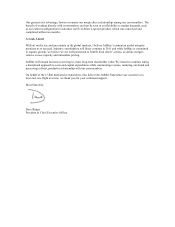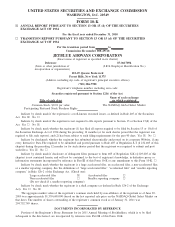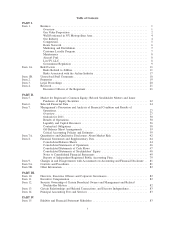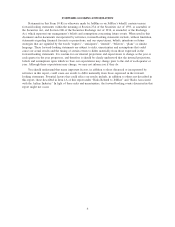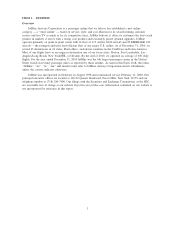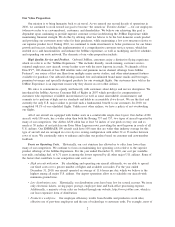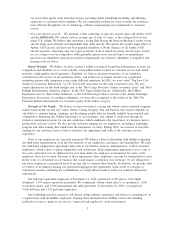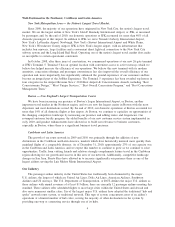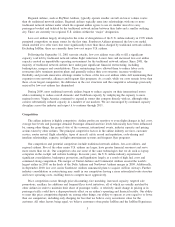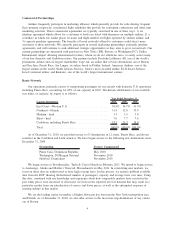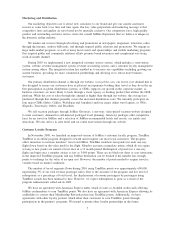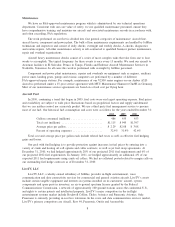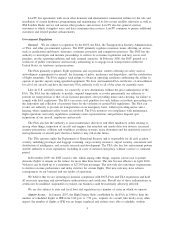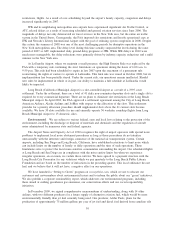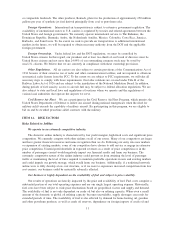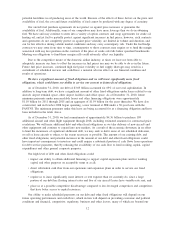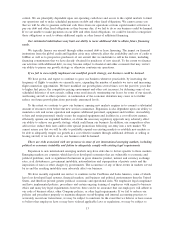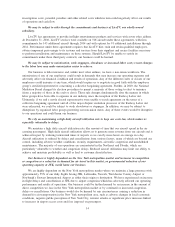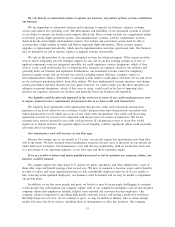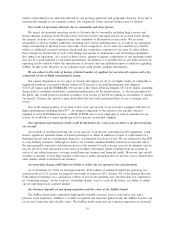JetBlue Airlines 2010 Annual Report Download - page 15
Download and view the complete annual report
Please find page 15 of the 2010 JetBlue Airlines annual report below. You can navigate through the pages in the report by either clicking on the pages listed below, or by using the keyword search tool below to find specific information within the annual report.
Commercial Partnerships
Airlines frequently participate in marketing alliances which generally provide for code-sharing, frequent
flyer program reciprocity, coordinated flight schedules that provide for convenient connections and other joint
marketing activities. These commercial agreements are typically structured in one of three ways: 1) an
interline agreement which allows for a customer to book one ticket with itineraries on multiple airlines; 2) a
codeshare in which one airline places its name and flight number on flights operated by another airline; and
3) capacity purchase agreements. The benefits of broad networks offered to customers could attract more
customers to these networks. We currently participate in several marketing partnerships, primarily interline
agreements, and will continue to seek additional strategic opportunities as they arise to grow our network. Our
current partnerships are structured with gateways in New York’s JFK, Boston, or Washington DC’s Dulles
International Airport allowing international travelers, whom we do not otherwise serve, to easily access many
of our key domestic and Caribbean routes. Our partners include Deutsche Lufthansa AG, one of the world’s
preeminent airlines and our largest shareholder; Cape Air, an airline that services destinations out of Boston
and San Juan, Puerto Rico; Aer Lingus, an airline based in Dublin, Ireland; American Airlines, one of the
largest airlines in the world; South African Airways, Africa’s most awarded airline; El Al Israel Airlines,
Israel’s national airline; and Emirates, one of the world’s largest international carriers.
Route Network
Our operations primarily consist of transporting passengers on our aircraft with domestic U.S. operations,
including Puerto Rico, accounting for 85% of our capacity in 2010. The historic distribution of our available
seat miles, or capacity, by region is as follows:
Capacity Distribution 2010 2009 2008
Year Ended December 31,
East Coast – Western U.S. ......................... 34.5% 34.7% 41.5%
Northeast – Florida ............................... 31.4 32.8 33.9
Medium – haul .................................. 3.3 3.5 3.0
Short – haul .................................... 7.6 7.7 7.6
Caribbean, including Puerto Rico .................... 23.2 21.3 14.0
Total . ........................................ 100.0% 100.0% 100.0%
As of December 31, 2010, we provided service to 63 destinations in 21 states, Puerto Rico, and eleven
countries in the Caribbean and Latin America. We have begun service to the following new destinations since
December 31, 2009:
Destination Service Commenced
Punta Cana, Dominican Republic May 2010
Washington, DC/Reagan National November 2010
Hartford, Connecticut November 2010
We began service to Providenciales, Turks & Caicos Islands in February 2011. We intend to begin service
to Anchorage, Alaska and Martha’s Vineyard, Massachusetts in May 2011. In considering new markets, we
focus on those that are underserved or have high average fares. In this process, we analyze publicly available
data from the DOT showing the historical number of passengers, capacity and average fares over time. Using
this data, combined with our knowledge and experience about how comparable markets have reacted in the
past when prices were increased or decreased, we forecast the expected level of demand that may result in a
particular market from our introduction of service and lower prices, as well as the anticipated response of
existing airlines in that market.
We are the leading carrier in number of flights flown per day between the New York metropolitan area
and Florida. As of December 31, 2010, we also offer service to the most non-stop destinations of any carrier
out of Boston.
6


